Nova Scotia Trip Report (Sep 2 – 11, 2025)
Day 1
Our group setoff from Halifax ready to enjoy all the wonders that early September in Nova Scotia has to offer. Off to Wolfville and the bucolic Annapolis Valley–land of high tides, apple orchards, and shorebirds–we headed to Grand Pre and the ‘Guzzle’ to see Semipalmated Sandpipers roosting at high tide. Among the couple thousand semis were a number of other species, including White-rumped Sandpiper, Least Sandpiper, Semipalmated Plover and Sanderling. Three Peregrine Falcons buzzed by keeping the shorebirds on alert. While the semis would take to the air, the plovers simply squatted down and blended into the sand. After watching the murmurations of sandpipers, we drove over to nearby Horton Landing to catch shorebirds arriving on newly emerged mudflats. A large group of Black-bellied Plovers kept our attention, as did a small group of Harbour Porpoises and a Grey Seal out in the waters of the Minas Basin.
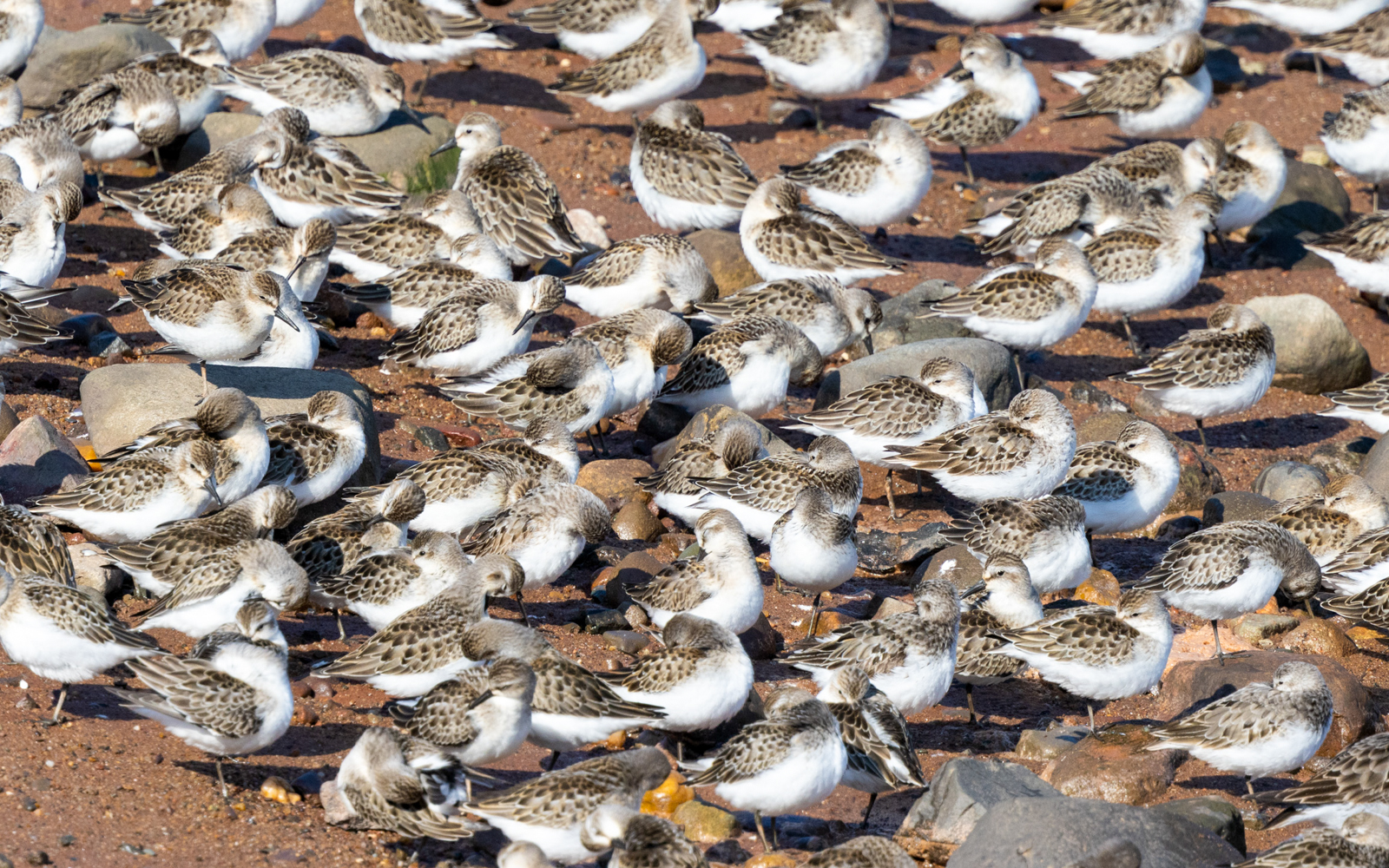
Semipalmated Sandpipers at high tide © Sue Powell
After a nice picnic lunch, and some scoping of a few Lesser Black-backed Gulls feeding in a field with Herring and Ring-billed Gulls, we headed over to nearby Oak Island Road, looking to add some songbirds to the mostly shorebird filled day. A little flock got our feet wet with fall warblers, and a nice Sharp-shinned Hawk made a pass. The same Peregrines made another appearance almost taking the Sharpie out of the air. From the end of Oak Island Road, we could see the exposed mudflats extending way out into the basin. Between the morning view at high tide, and the afternoon view at low tide, we all appreciated the amount of mud real estate that the sandpipers have to fatten up for their journey to South America for the winter. With a beautiful birdy and sunny day spent around Wolfville, we had supper at the Old Orchard Inn. The food was delicious, with most getting a start on eating their fill of seafood. Stories were exchanged, laughter and birding stories flew about, and we all had a good chuckle when the waitress accidently put a straw in a pint of stout thinking it was a diet coke; the unsuspecting drinker getting a sudsy surprise. Once the stout and the diet coke found their rightful owners, it was smooth sailing and with everyone refreshed and ready for tomorrow!
Day 2
We started our day by heading to Blomidon Provincial Park outside of Wolfville. Perched high on red sandstone cliffs, this park can be great for migrant songbirds in the fall. Stepping out of the vans, I could hear the flight calls of many warblers, and knew it was going to be a birdy morning. Quickly into a flock of migrants, we were soon spotting Black-throated Green Warblers, Chestnut-sided Warbler, Blackburnian Warbler, Ovenbird, Northern Parula, Black-and-white Warbler, Least Flycatcher, Blue-headed Vireo, and Red-eyed Vireo. Up the road a ways, a massive roving flock was on the move. Using playback, the flock came our way with a hurricane of warblers about. Black-throated Green were most abundant, but a nice Wilson’s Warbler, Nashville, Canada, and Magnolia adding to the warbler list. Downy and Hairy Woodpeckers, along with both nuthatches were also spotted in the mixed woods, while an Osprey, Northern Harrier, and Bald Eagle soared overhead. Heading up to the campground, we continued our search for migrant birds. It seemed that most of the songbirds were back down the hill, but from out vantage up over the Minas Basin, we enjoyed nice views of a few Red-tailed Hawks, and a good number of migrating Broad-winged Hawks. Still swirling from all the warblers, we took our picnic lunch in the park, enjoying the nice weather and the views.
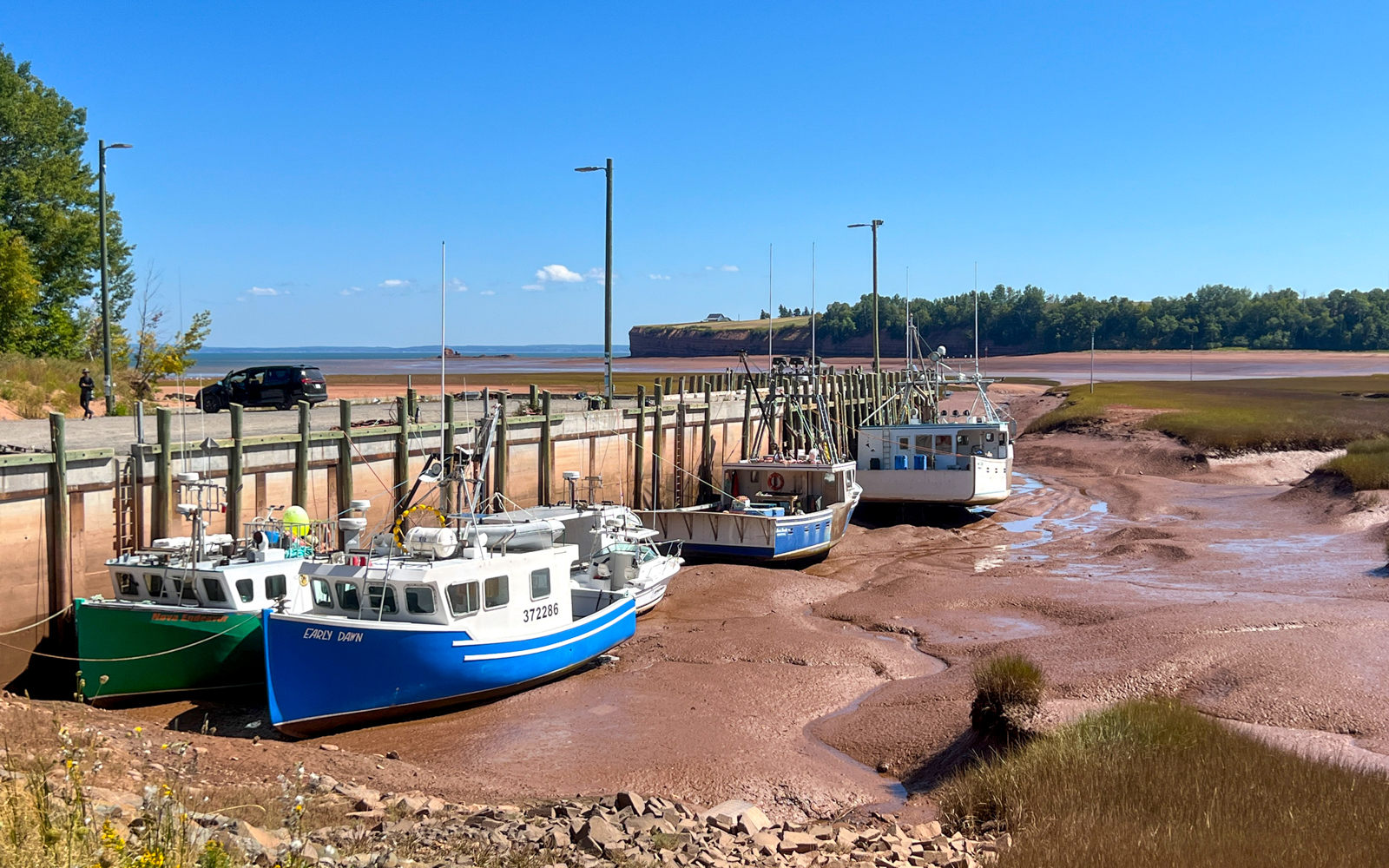
Boats sitting on the mud at low tide in the Minas Basin © Sue Powell
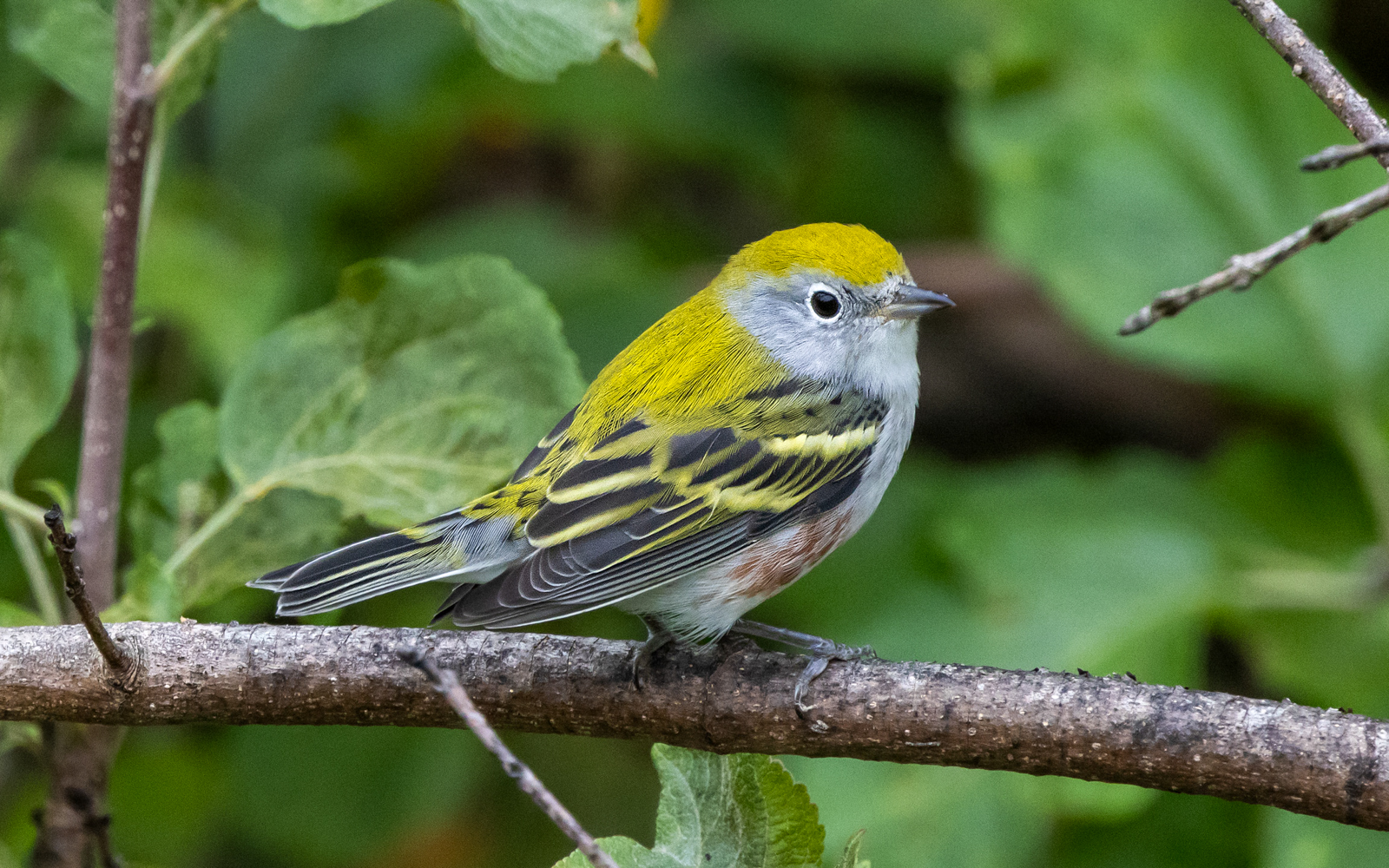
Fall-plumaged Chestnut-sided Warbler © Sue Powell
From Blomidon, we went to nearby Scot’s Bay. At the end of the Bay of Fundy, the bay and beach can collect some interesting birds. With the tide well out, we nonetheless enjoyed nice views of Sanderling, and two Nelson’s Sparrow in the saltmarsh grass showed well enough for everyone to get satisfying looks. It is always nice to see these specialties of the Atlantic Coast saltmarshes. Bobolinks flying overhead hit home that summer was waning and that fall migration was well and truly on. Popping into a nearby wooded area, a few more warblers greeted us, including a nice Mourning Warbler. A known breeding spot, not all breeding birds had flown the coop yet. For dinner we had a quick look around the town of Wolfville and enjoyed another nice meal at The Church restaurant.
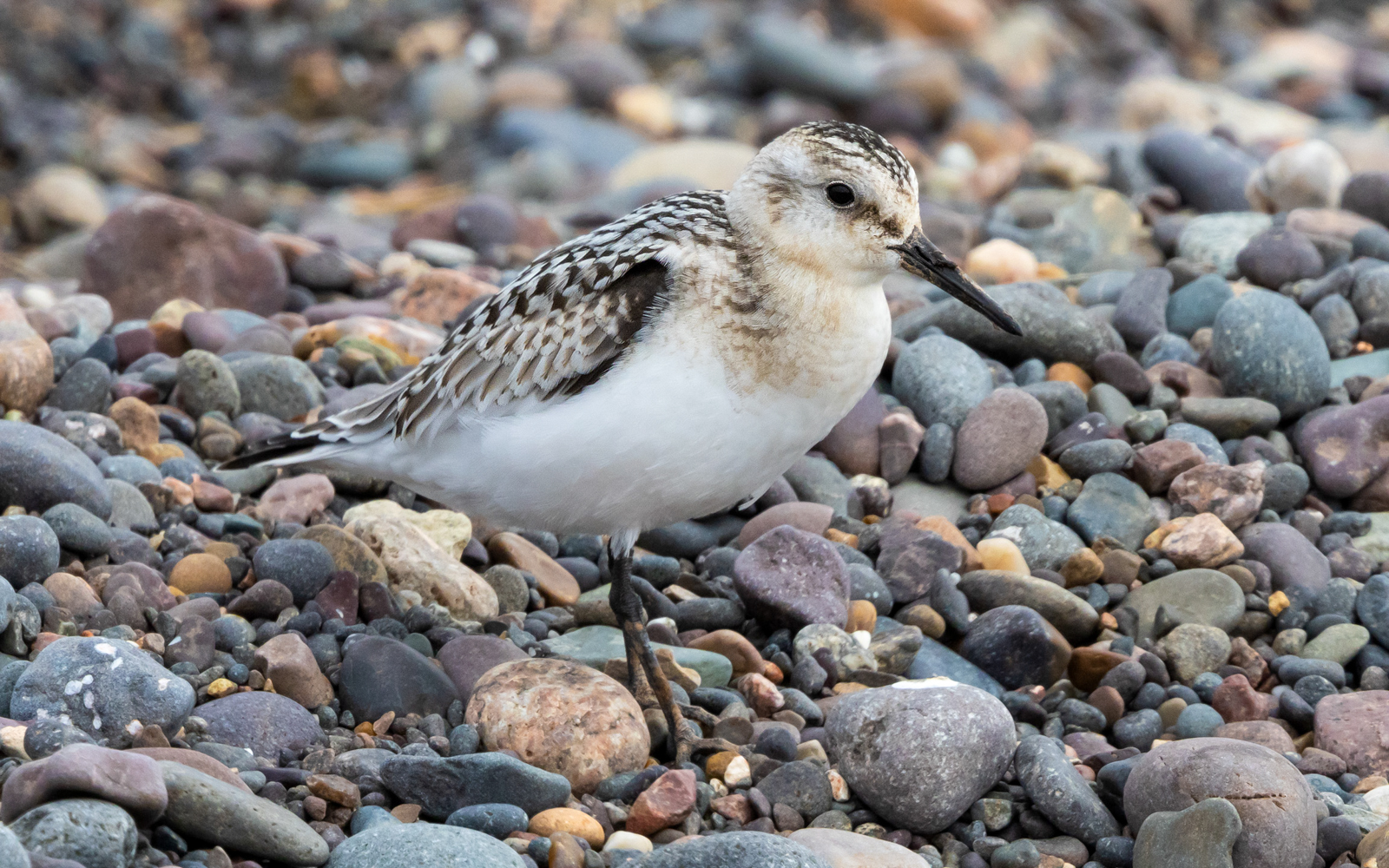
Confiding Sanderling © Sue Powell
Day 3
Heading down the Annapolis Valley today, we made our first stop at Belleisle Marsh. A mix of wetland impoundments, shrubland and natural meadows, we enjoy a real nice 2 hours. The highlights were two migrating Olive-sided Flycatchers showing well for the whole group as they darted from treetop to treetop, Northern Harrier hunting over the fields, and good looks at a few more warblers including Black-throated Green, Magnolia, Palm, and Blackburnian. A Veery showed well for some in the group, though some vocal Northern Cardinals did not pose nicely for the few westerners in the group that still needed a good look at these beauties.
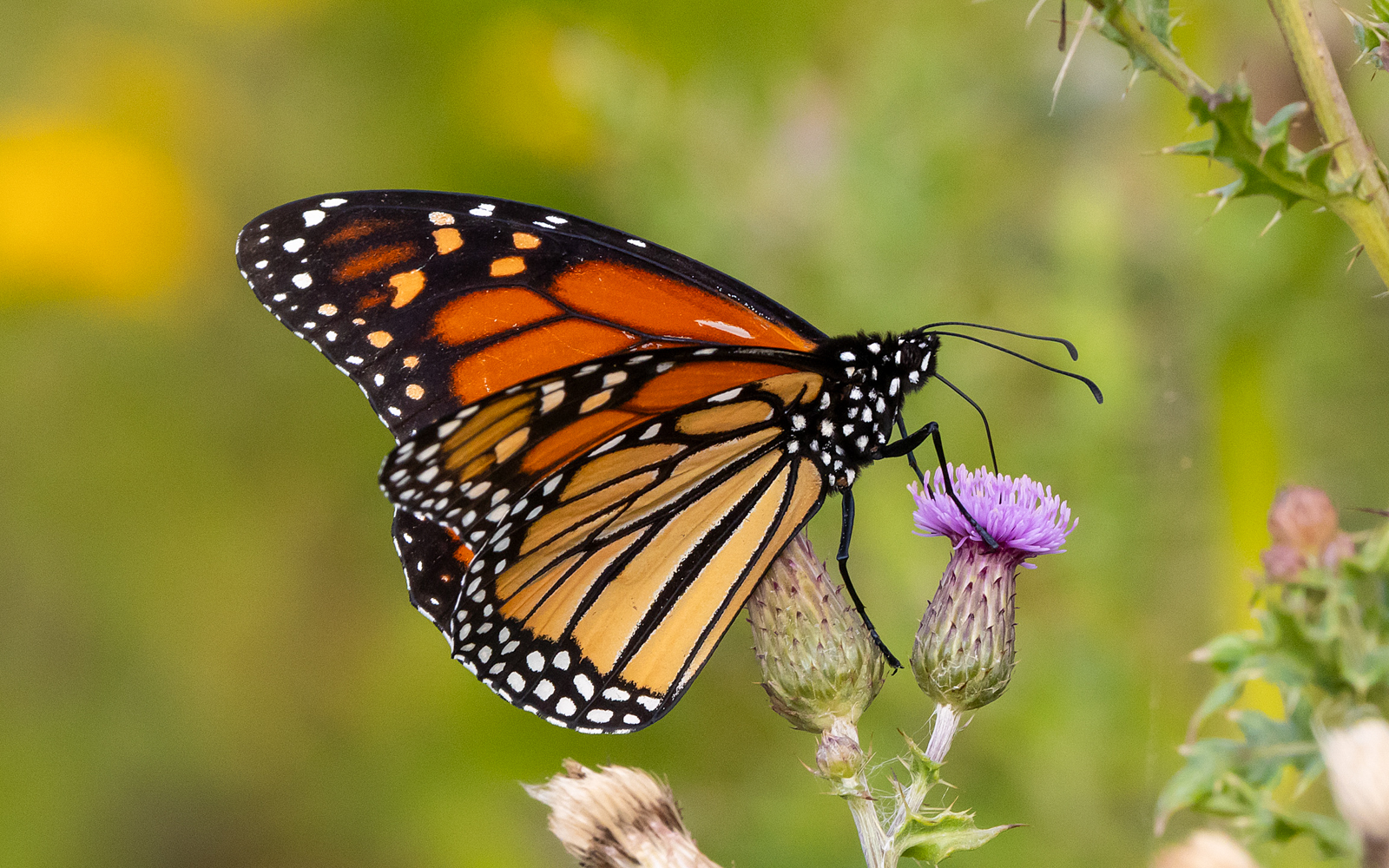
Monarch butterflies were also on the move © Sue Powell
Leaving Belleisle, we stopped in Digby for lunch, and then on to Brier Island. Crossing on two small ferries, we enjoyed the sights of this picturesque area, arriving on Brier to a foggy afternoon. Checking out nearby Westport Marsh for a long staying Wood Stork that remained hidden, we then headed to West Light. Two American Kestrels perched nicely for us on the short drive. At the lighthouse perched on a rocky outcrop overlooking the Bay of Fundy, we enjoyed views of Common Eider, Black Guillemot, and a few seals lounging around. We wrapped up another wonderful day with a nice meal at the Brier Island lodge, including an extra decadent Raspberry Cheesecake for those brave enough to consume the extra calories.
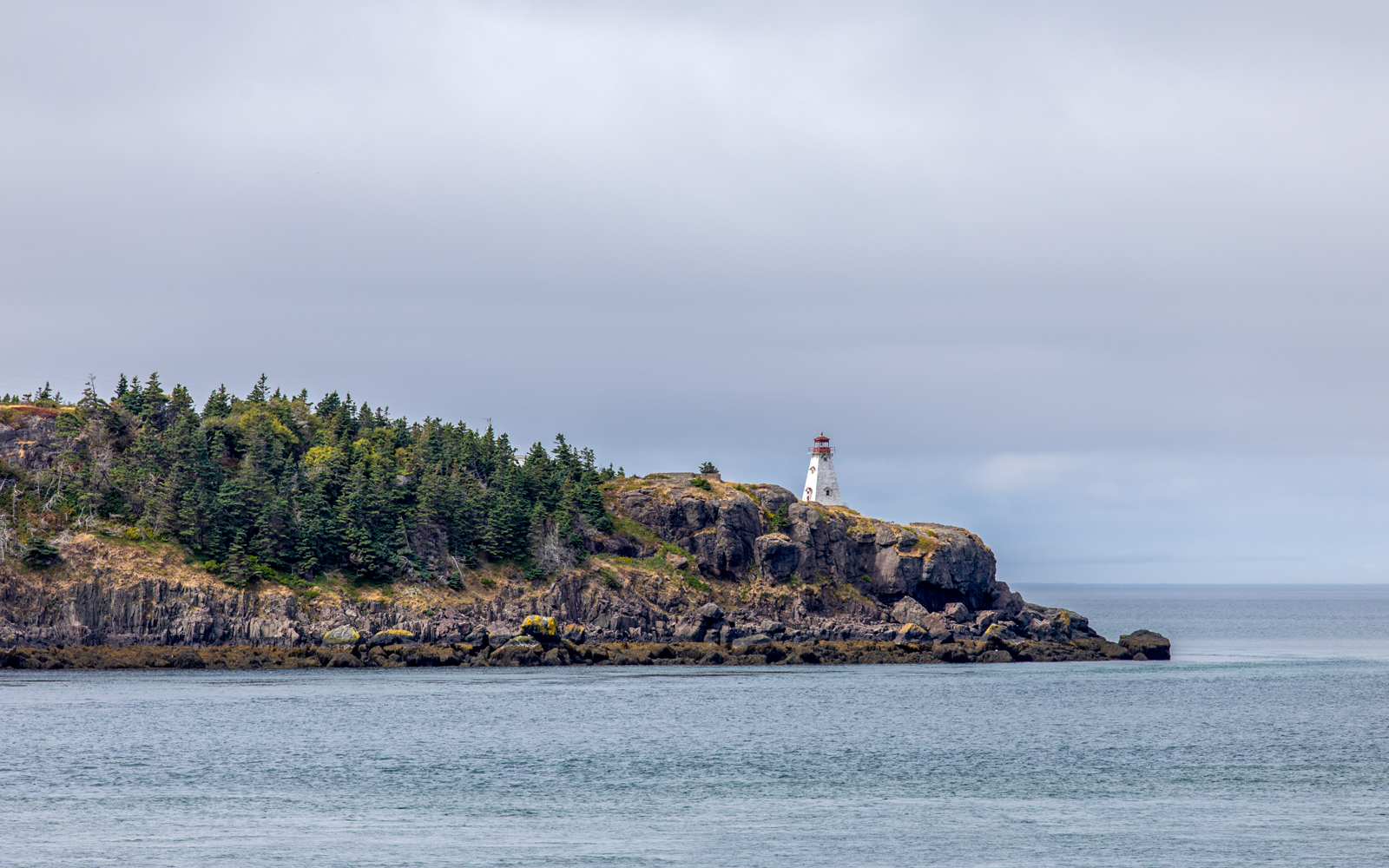
View from the ferry © Matt Lee
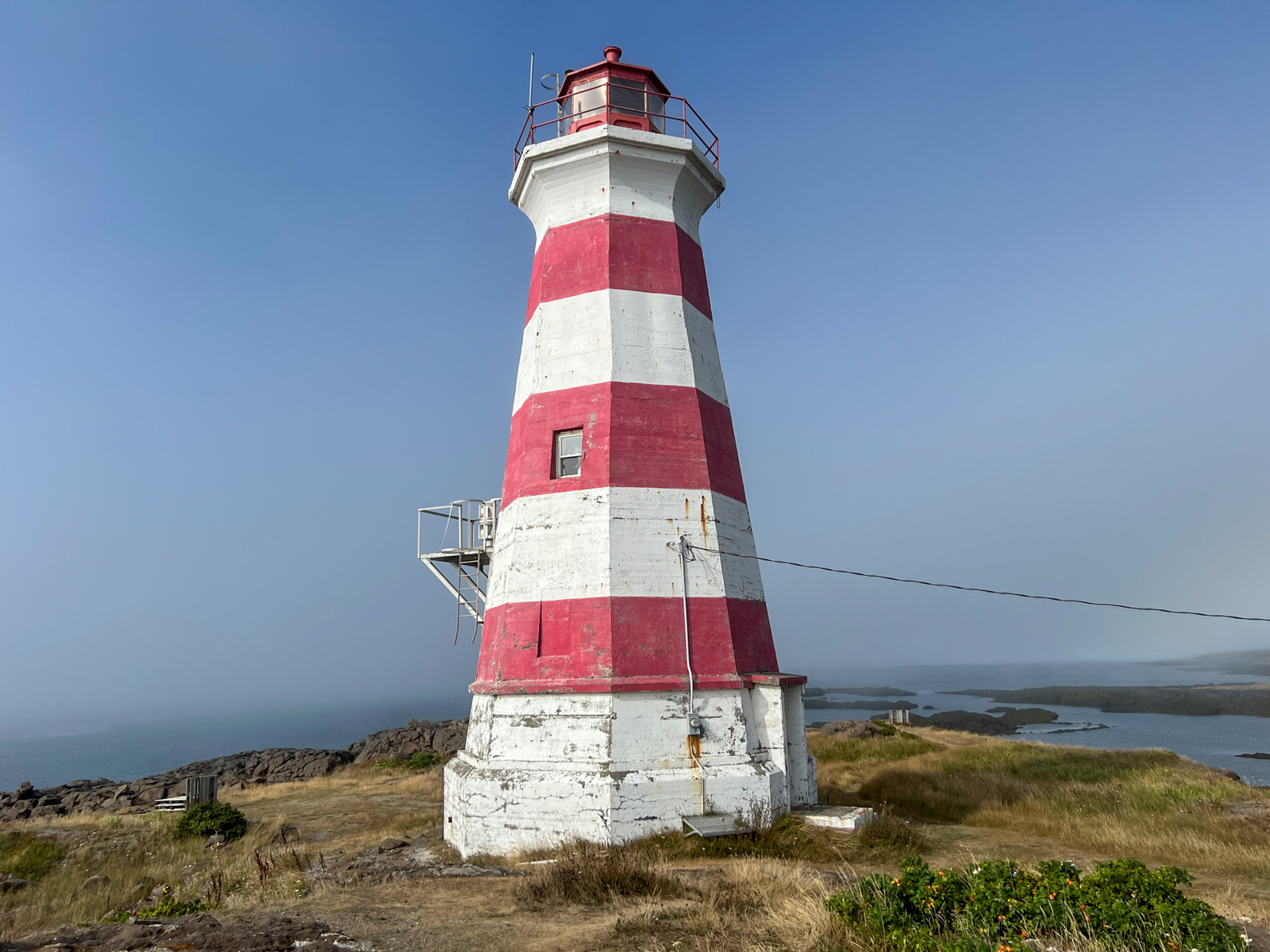
West Light on Brier Island © Sue Powell
Day 4
We started off the morning by taking a boat trip out into the Bay of Fundy. Steaming out of Grand Passage we saw a number of Great Cormorants perched at the waters edge. Out in the bay, Northern Gannets and Great Shearwaters cruised by, and we spotted a number of Razorbill and Atlantic Puffins loafing on the water. Despite it being a bit windy and choppy, everyone fared well seasick wise. As the trip chugged along, we started encountering more and more phalaropes. Most were Red-necked, but a few Reds were mixed in. Usually it is the opposite in terms of numbers! While enjoying the phalarope flocks, we spotted a Pomarine Jaeger cruising by and then watched it join two Parasitic Jaegers on the horizon. To our astonishment, we noted they were in hot pursuit of a phalarope. The acrobatic chase continued and continued, and while they were some distance from the boat, it was still quite riveting, a real Nat Geo moment.
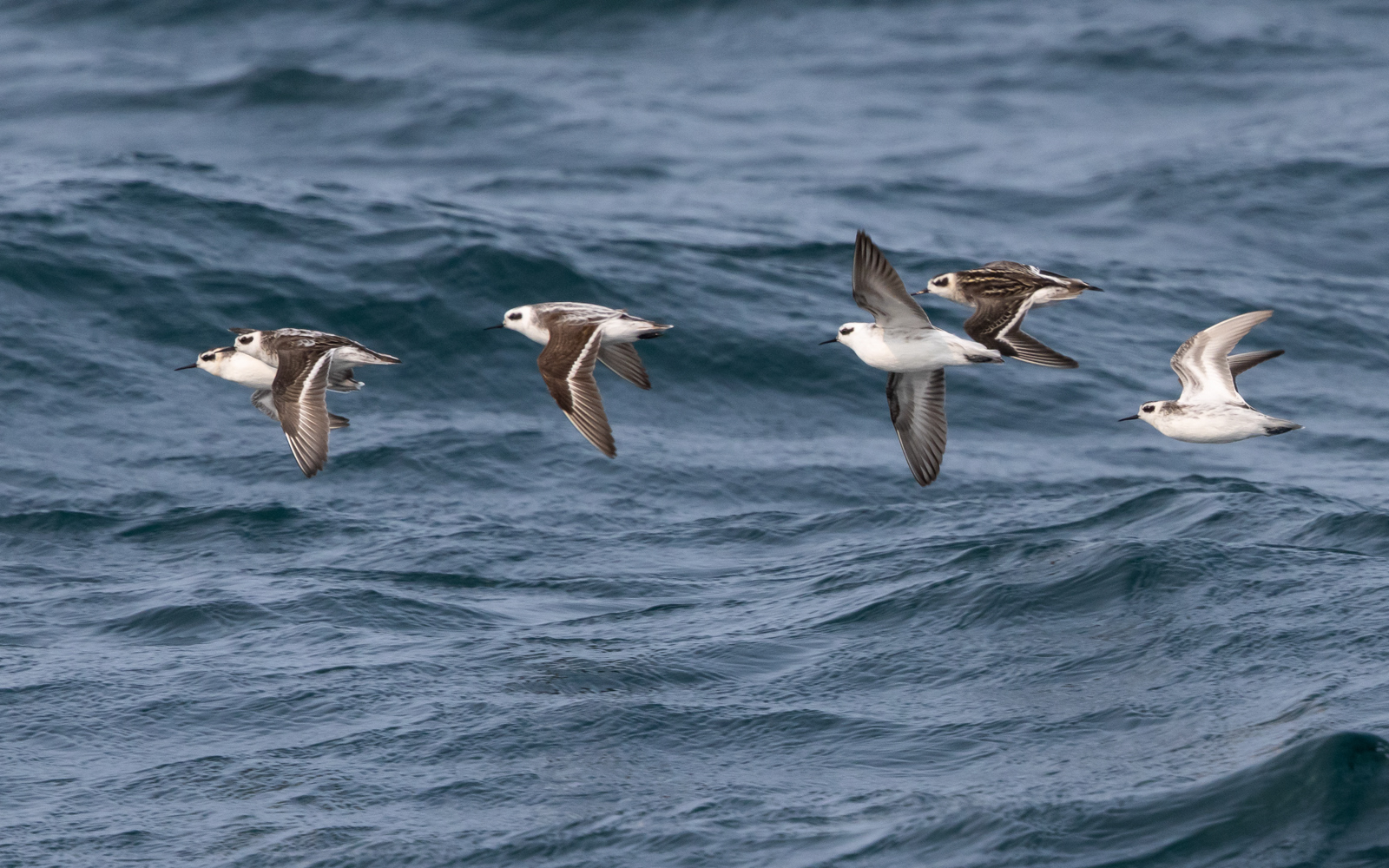
Red-necked Phalaropes © Sue Powell
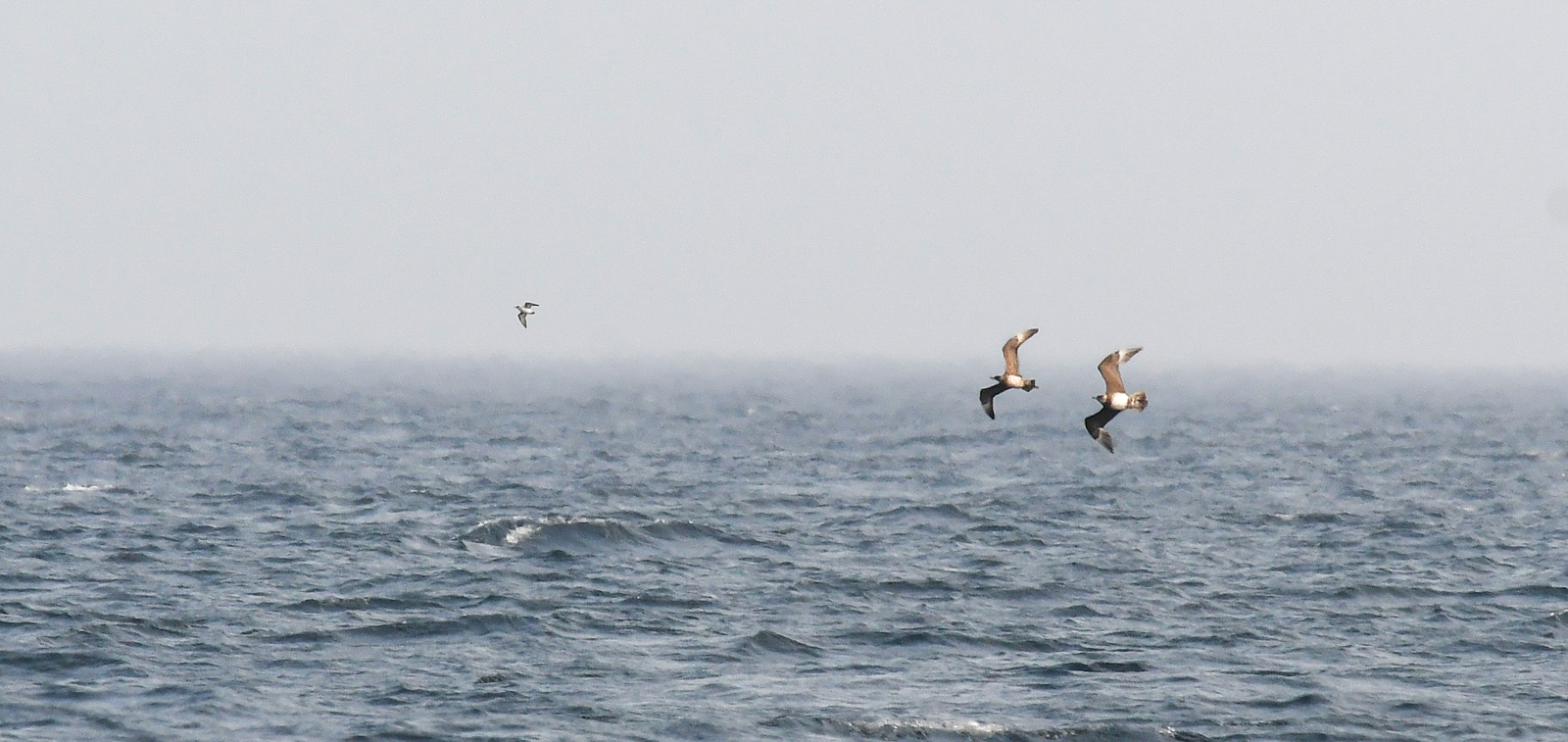
Jaeger chase! © Dominic Cormier
Back on dry land, we ate our picnic lunch back at the Westport Marsh, hoping for the Wood Stork to make an appearance. Again, it alluded us, but refreshed from the hearty spread, we headed over to Pond Cove Beach. For the next hour or two we had a proper shorebird show. High up the wrack line, hundreds of birds fed and went about their business close by, hardly caring for us. Two gorgeous looking Buff-breasted Sandpipers were a mere stone’s throw away, and accompanied by Semipalmated Sandpipers, Least Sandpipers, a nice Baird’s Sandpiper, White-rumped Sandpipers, Sanderling, a Pectoral Sandpiper, and Semipalmated Plovers. We were all mesmerized by the confiding birds, eventually prying ourselves away from the spectacle. Stops at the Westport Marsh again, as well as a run to the North Light were pretty quiet birdwise, but scenic nonetheless! Our supper that night was once again well deserved, though I am not sure people had enough room for the cheesecake for a second night.
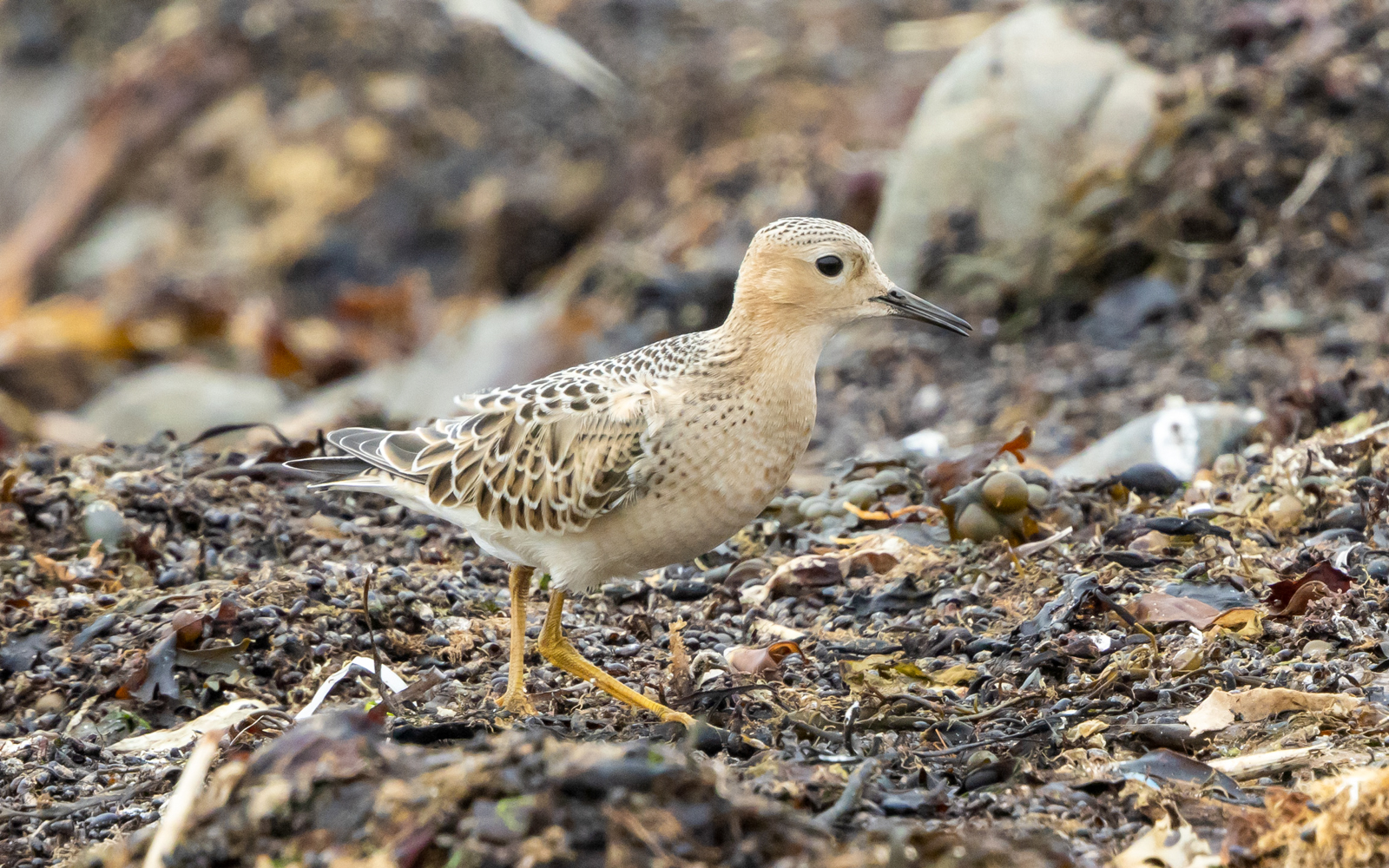
Up close and personal with a Buff-breasted Sandpiper © Sue Powell
Day 5
With another morning on Brier at our disposal, we zipped around, taking in North Light, Westport Marsh, and Southern Point. The winds weren’t favourable for songbird migration, but the regular cast of cormorants, eiders, guillemots, gannets, and Great Black-backed and Herring Gulls were well enjoyed. In the end, the Wood Stork, never showed for our group, “c’est la vie” as they say. As we left Brier around lunch, we enjoyed lobster rolls and other hearty fare at the cafe in Petite Passage, a good consolation.
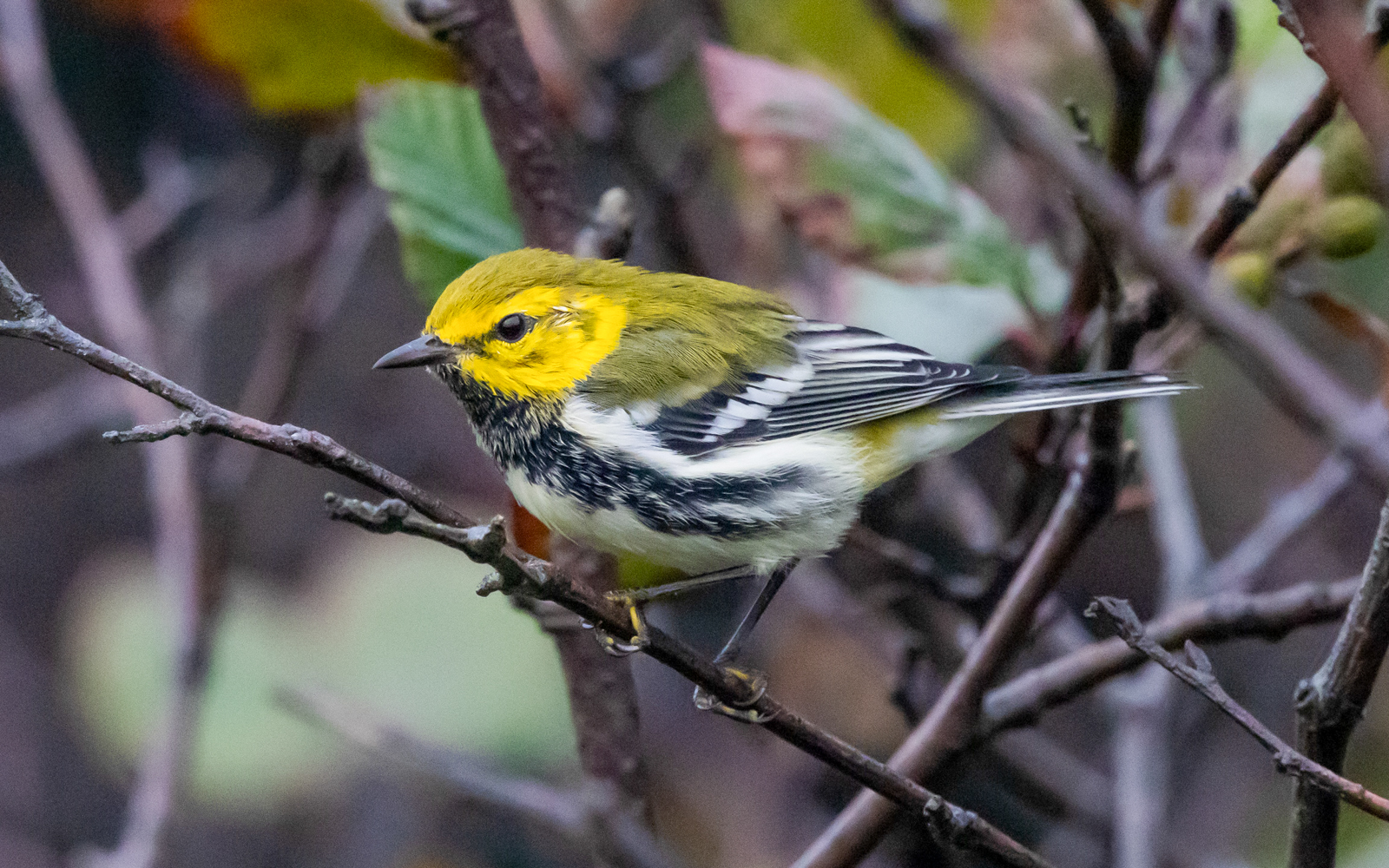
Black-throated Green Warbler adding a little colour to the Brier Island landscape © Sue Powell
With a bit of a drive this afternoon to get to Yarmouth, we only had time for one stop, Mavilette Beach. A stunning sandy beach, the tide was out and we enjoyed a classic stroll along the beach. A good little mix of shorebirds kept us entertained on the bird front, though no one was brave enough to dip their feet in the water this year! Some much needed rain arrived late afternoon making it an easy choice to go to the hotel a bit early after another big day.
Day 6
Starting the day off looking for songbird migrants, we tried the ever tempting Cape Forchu. It was a bit slow, so we headed to the nearby Chebogue Point. We had some great birding here. A sparkling male Hooded Warbler showed well at the farm, sometimes in the company of a Wilson’s Warbler and a Northern Waterthrush, both well seen! With few trees at the point, the birds get concentrated and we also got cracking looks at Yellow Warbler, Black-and-white Warbler, Savannah Sparrows, and for some a Yellow-breasted Chat. The latter ducked out of view rather quickly before we all had a look. A group of Black-bellied Plovers and a Whimbrel were out in the fields, along with some Barn Swallows overhead.
From Yarmouth, we headed to Cape Sable Island. Checking the flats at Daniel’s Head, we were delighted to spot some Red Knot amongst some Black-bellied Plovers. From there, we took our picnic lunch over looking the flats at ‘The Hawk’, an IBA. Here the shorebirds numbered in the thousands. Mostly distant, we all got on some Hudsonian Godwits in the scope, but alas no American Oystercatchers. After another delicious lunch, we headed back to Daniel’s Head, this time to walk the beach. The shorebirds were bumping, with swirling flocks of Semipalmated Sandpipers and Sanderling. We picked out a few White-rumped Sandpipers amongst the crowd, and an elegant American Golden Plover posed for a long while on the beach at close range. Spotting a trio of local birding friends walking down the beach, they informed us they had a nice juvenile Laughing Gull and an adult Franklin’s Gull further along–how serendipitous as both are rarities for the region. We hustled along the beach, get cracking views of both loafing at the water’s edge. The Franklin’s was even a Nova Scotia lifer for me, not something you get everyday in your home province! Some nice views of Whimbrel on the flats capped off our birding day, and it was off to Shelburne for the evening.
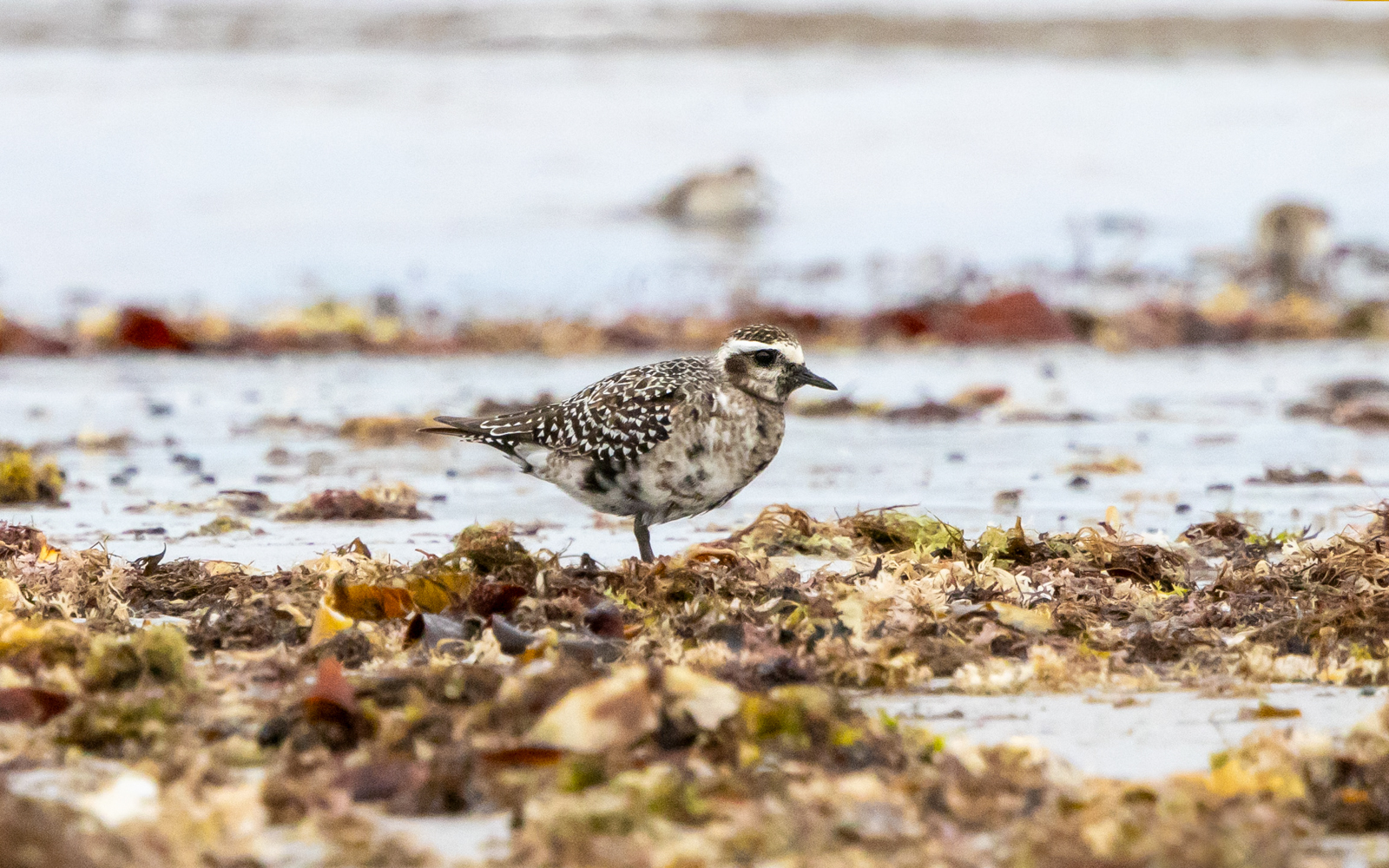
American Golden Plover © Sue Powell
Day 7
Starting the day at Sandhills Beach PP, we were in to some great songbird activity right of the hop. Unfortunately, the saltmarsh mosquitos were out in force, and while we had Yellow-rumped and Palm Warblers everywhere, along with Blackpoll, Northern Parula, Cape May Warbler and Red-eyed and Blue-headed Vireos, we didn’t linger too long. As if we hadn’t had enough lighthouses on the trip, we then headed to Baccaro Point, scanning the ocean from the lighthouse. Not much was moving out on the water, but a Merlin and an American Kestrel made an appearance.
Making our way up the south shore of Nova Scotia, we stopped in at Louis Head. Warblers were about, with nice views of Ovenbird, Black-and-white Warbler, Magnolia Warbler, American Redstart, Northern Parula, and our first Bay-breasted Warbler of the trip. Time for lunch, we stopped at the picnic park along the Sable River. In amongst the White Pines, we feasted once again. Bellies full, and sufficiently plied with dark chocolate, a daily afternoon ritual on the trip, Adam and I had another sandy beach walk in store to walk off the post-lunch lull. At Summerville Beach PP, we took in the beautiful white sands, and I finally dipped my toes in the water to refresh my spirit. No one else needed the refreshing as they were all energized by cracking views of Red Crossbills among the white spruce bordering the access road. Unable to find any other goodies amongst the constant flurry of Yellow-rumped Warblers, we may tracks to the town of Lunenburg. Arriving in time for a little exploration of the historic town, most enjoyed the Bluenose Schooner, and the tall ship the Picton Castle that were both in port.
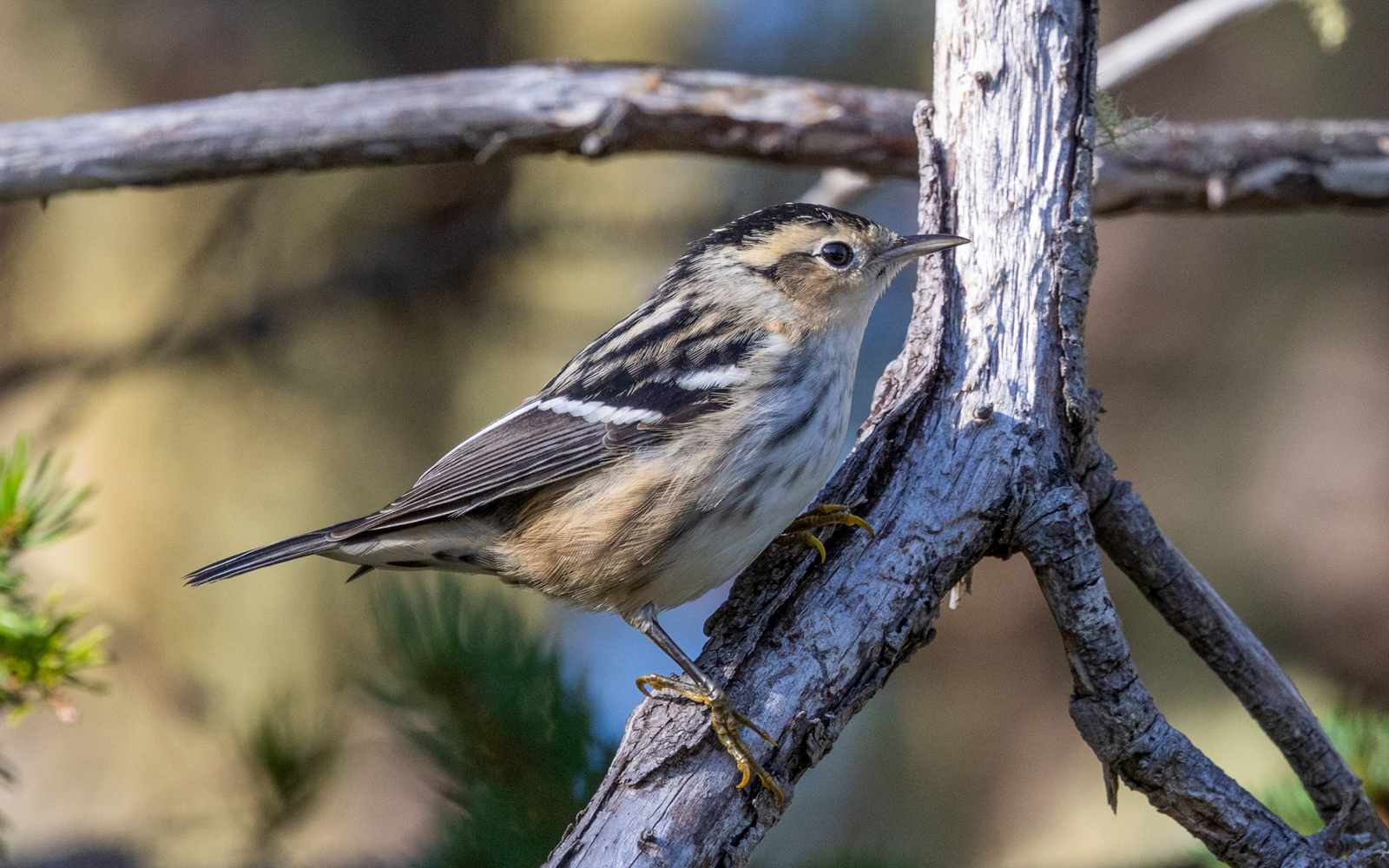
Black-and-white Warbler at Louis Head © Sue Powell
Day 8
Our last full day of the trip started off on some logging roads south of Halifax. Hoping for Spruce Grouse, we enjoyed a nice suite of forest birds, including Black-throated Blue Warbler along with 9 other species of warbler, Hermit Thrush, Golden-crowned Kinglet, Brown Creeper, both Vireos, and the ever present Red-breasted Nuthatches, which had been on the move for the entirety of our trip. Some Canada Jays made a brief appearance overhead, but did not stick around for good looks. Leaving the area, our picnic stop at Lewis Lake PP yielded some nice Common Loons while we enjoy our last picnic spread, upgraded with some charcuterie. A few people saw a Pileated Woodpecker, but otherwise it was fairly quiet.
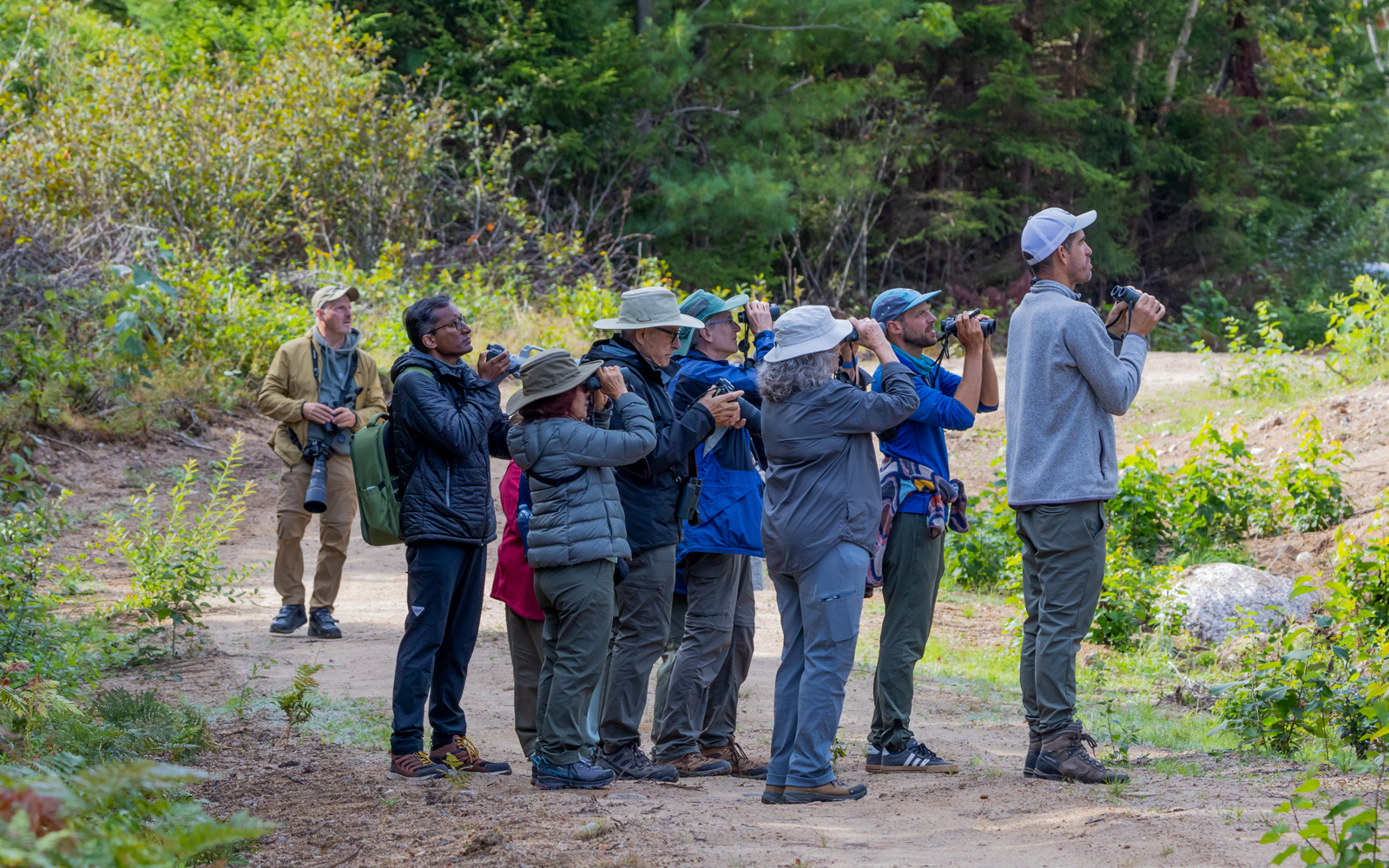
Taking in the forest birds © Sue Powell
One can’t go to Halifax and not check out the iconic Peggy’s Cove, so we made the stop at this iconic lighthouse, along with the Swissair memorial site nearby. Satisfied with the scenery, we headed out to Ketch Harbour. A reported Dickcissel at Sandy Cove obliged us by coming out to some seed thrown out by the finder. In the company of White-throated Sparrows, it was a nice way to end the trip from a birding perspective. All that was left was to head into downtown and enjoy a nice meal at the Henry House, a top-notch pub set in a historic stone house once owned by one of the father’s of confederation. For most, they got their last fill of seafood while we all enjoyed the last meal with a celebratory air to the soiree.
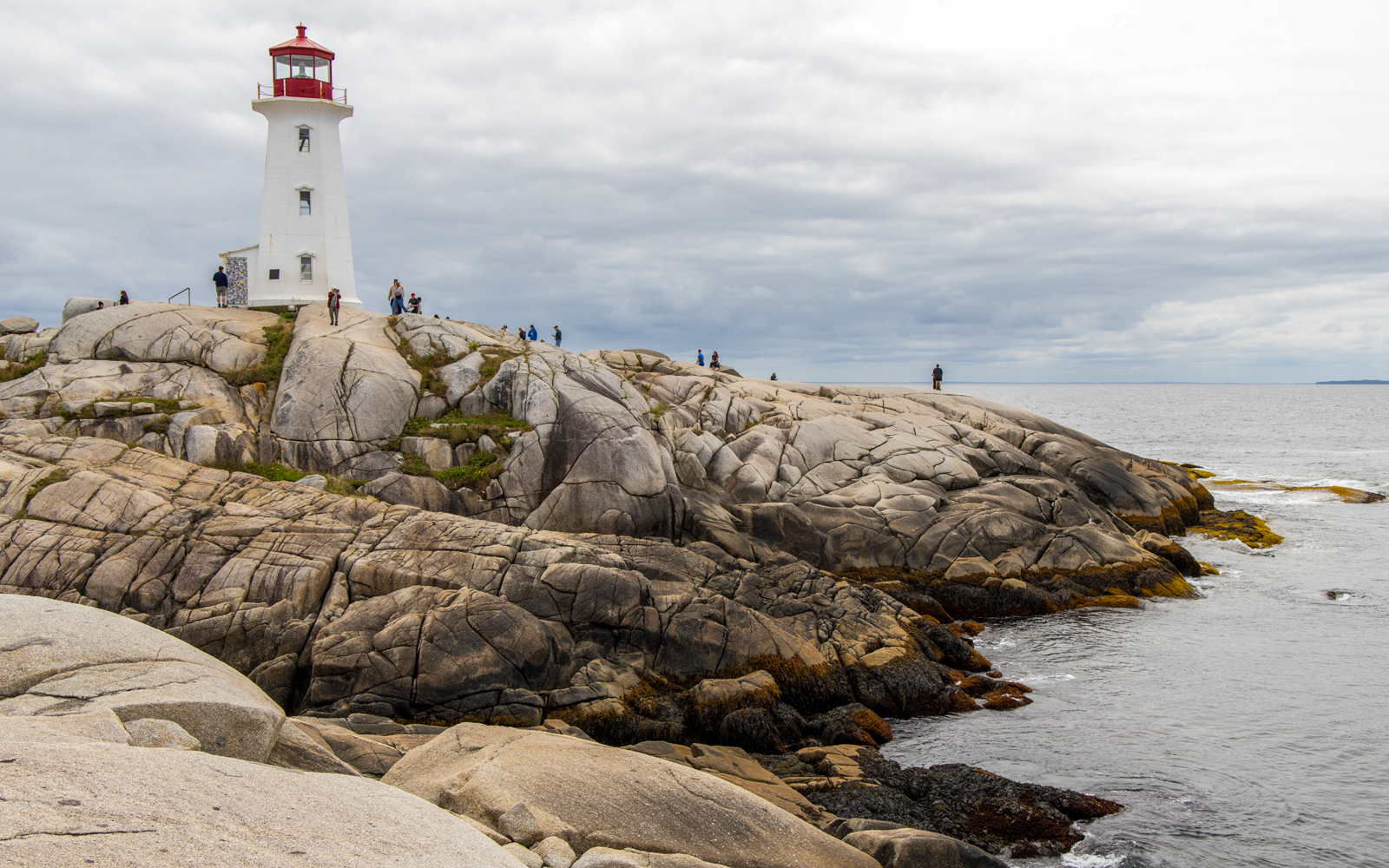
Peggy’s Cover in all its splendour © Matt Lee
Back at the hotel, I took a last poll of people’s highlights while we said our goodbyes. To sum them up, people enjoyed what Nova Scotia is known for, delicious seafood, sandy beaches, and beautiful coastal scenery. On the bird front, our afternoon with the shorebirds at Pond Cove, and the boat trip out on the bay were particularly etched into the hearts of the group, as was the morning at Blomidon, and the walk along Daniel’s Head Beach. Of course, there were many more, but you’ll just have to come on the next one and make memories and highlights for yourself!
Once again, it was a great pleasure to lead this trip along with the ever affable and skilled Adam Timpf, and I thank all the wonderful guests who made teh trip so special and a joy to lead.
Until next time,
Dominic
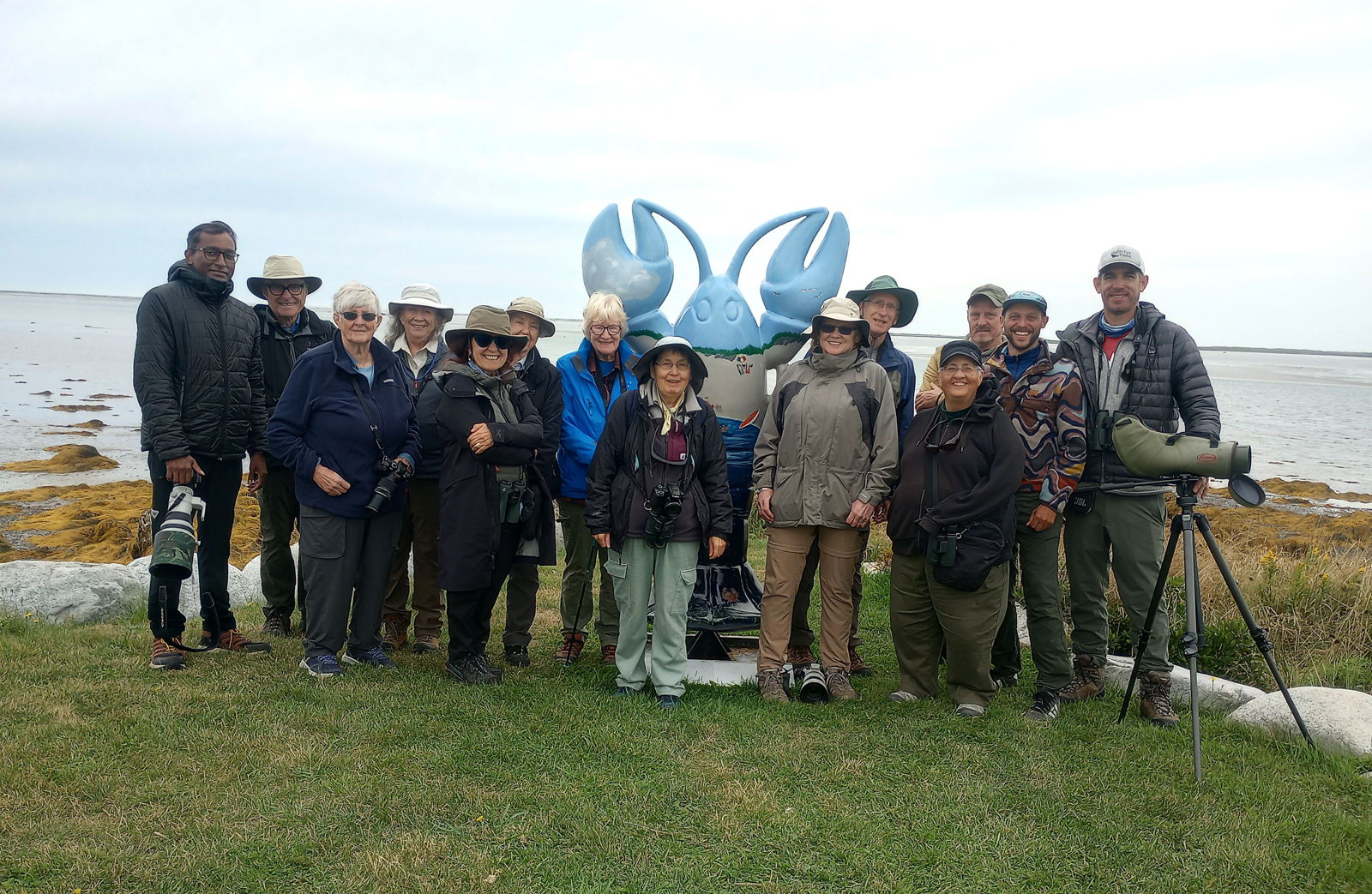
Our group
Nova Scotia Birding Tour eBird species list (Sep 2 – 11, 2025)




